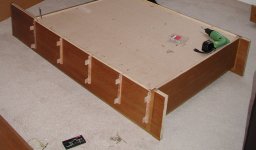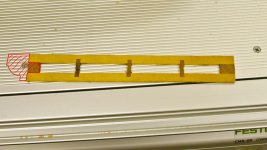benwheeler
Member
- Joined
- Sep 29, 2014
- Messages
- 164
Good morning knowledgeable people,
I'm making a bookshelf for a client out of 25mm plywood. It will be varnished, and the edges left exposed.
I have a new 48T blade for my TS55 - should this be up to the task? If so, are there any recommended blade and travel speeds? And any other tricks to get the best result, ie scoring the top surface first before sawing all the way through?
Thanks for any help.
I'm making a bookshelf for a client out of 25mm plywood. It will be varnished, and the edges left exposed.
I have a new 48T blade for my TS55 - should this be up to the task? If so, are there any recommended blade and travel speeds? And any other tricks to get the best result, ie scoring the top surface first before sawing all the way through?
Thanks for any help.





